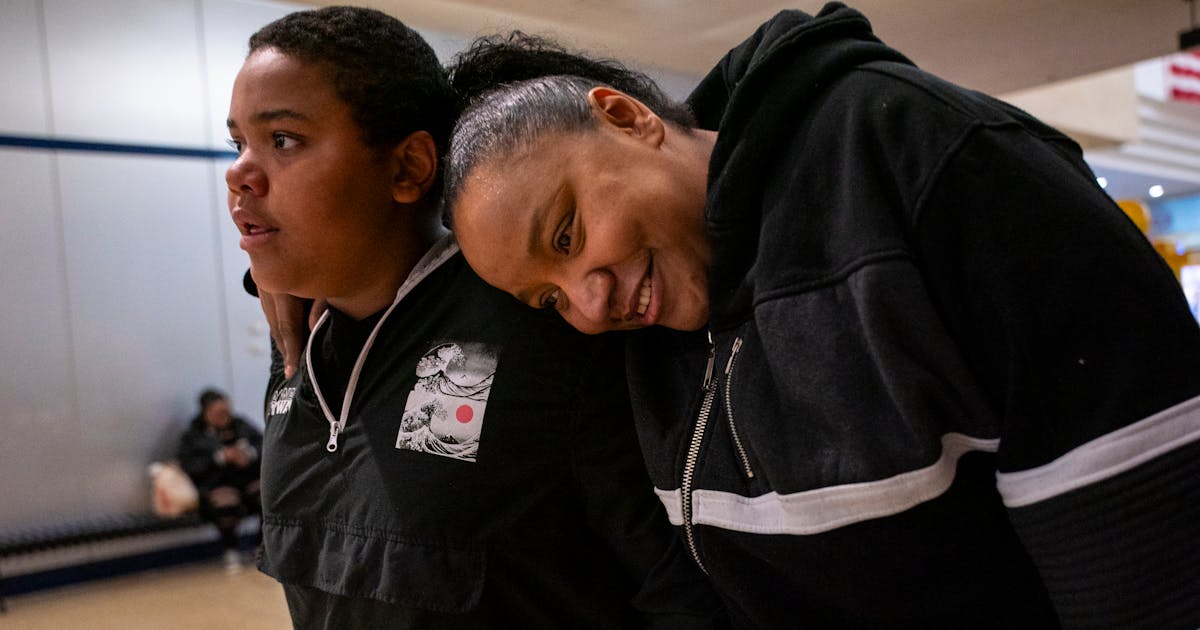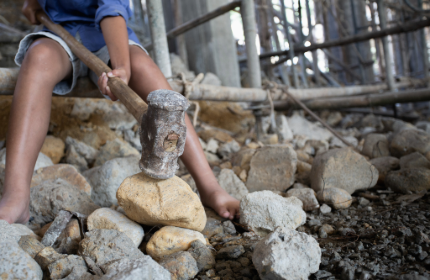Racial disparities in child protection prompt Minnesota legislation, federal complaint – Star Tribune

Layla Jackson never returned to her mother.
The cheerful, observant 17-month-old was murdered by her foster father in 2018.
Latasha Bacon said child protection workers should not have removed her daughter from her care after the girl returned from a babysitter’s with a broken leg. Bacon, who is Black and Native American, is part of a movement demanding Minnesota rethink its child protection system that has disproportionately penalized families of color.
“Nobody wants to say, ‘Racism is very much still alive.’ Nobody wants to say that our system is broken,” said Bacon, who mentors other parents involved with child protection. “A lot of these parents are being faulted for neglect for being broke and living below the poverty guidelines. Instead of being given the resources, they are just taking their kids away.”
A Minnesota family’s chances of being reported for child maltreatment varies dramatically depending on their race. So does the likelihood a kid will be removed from their family, or reunited with them down the road.
The Minneapolis branch of the NAACP recently filed a federal civil rights complaint saying discrimination in the child welfare system is devastating Black families, particularly in Hennepin and Ramsey counties.
Advocates are also pressing for action at the State Capitol, where they hope that after years of failed attempts, lawmakers will pass legislation this session to address unequal outcomes. The bill is named the Layla Jackson Law.
“African American families are coming into the system for less serious allegations than our Caucasian peers, yet we continue to face the most harsh and punitive outcomes,” Kelis Houston, chairwoman of the local NAACP’s child protection committee, recently told lawmakers. “What we’re asking for today is for this state to stop harming our children.”
State takes aim at disparities
African American families are at the center of recent advocacy, but state data shows gaping child protection disparities for many demographic groups. The differences are particularly stark for Native American families.
Native American kids are 16 times more likely to be removed from their families than white children in the state, according to the most recent state report on out-of-home placements. Kids who identify as two or more races are seven times more likely.
African American and Hispanic children are twice as likely as their white peers to be taken from their homes. Children with disabilities are also disproportionately represented in foster care.
The bill at the Capitol, which has expanded to include African American and “disproportionately represented children,” aims to ensure there are “active efforts” to keep a child with their family or reunify them as soon as possible; that child welfare staff get cultural competency training, and a portal is created where people can report noncompliance with the law. It would also establish a grant program to provide training to social services agencies, court advocacy, culturally specific family counseling and other services.
The legislation doesn’t have a price tag yet.
Associations representing counties, social service administrators and county attorneys have said they support the overall aim, but raised some concerns. Counties have said the law won’t succeed without more state spending to bolster the child welfare workforce, services, training and technology. And county attorneys proposed changes to the bill that they said would better ensure “necessary public safety safeguards.”
“Safety, of course, is first and foremost,” said Rep. Esther Agbaje, DFL-Minneapolis. But she said when child protection gets involved, “We also don’t want to be overly onerous on folks who are just trying to raise their families.”
Some goals of the bill are already underway. The Department of Human Services created the African American Child Well-being Unit in 2020, which is launching a pilot program to provide $3 million in grants for community efforts to prevent child abuse and keep families together.
The state unit also set up an advisory council to review data, advise on priorities and review issues, said Tikki Brown, assistant commissioner for children and family services at the DHS. The legislation would enshrine the advisory council in law.
Lawmakers are also working on a bill to strengthen a decades-old state law that expanded on the federal Indian Child Welfare Act, which governs the removal of Native American children from their families.
“For our Native kids, they were removed for very discretionary reasons” and kept in foster care longer, said Sen. Mary Kunesh, DFL-New Brighton.
Counties have failed to notify tribes of child protection proceedings and are not ensuring that tribes have a say in foster care placements to try to keep kids with kin, she said. Her bill aims to ensure those steps are taken and would mandate that court officials ask about American Indian heritage in all child protection proceedings and make it easier for tribes to participate in that legal process.
Hennepin, Ramsey county critiques
The NAACP’s civil rights complaint calls for an investigation into discrimination and how federal funds are used in Minnesota’s child protection system. It zeroes in on Hennepin and Ramsey counties.
Cindy Devonish, a Hennepin County child protection worker and NAACP member, said she’s seen the disparities firsthand and told lawmakers she was removed from a case where she objected to terminating parental rights.
“This is unequal treatment that comes at a high cost to our community as a whole,” Devonish said.
The NAACP asked the federal government to compel Minnesota and the counties to comply with the Civil Rights Act and pressed the state to create additional procedures to document racial equity issues. It raised concerns with law enforcement emergency removals of children, a lack of services to support Black families and the state’s safety and risk assessment tools.
Ramsey County agreed the DHS should update its risk assessment tool, noting that having more children in a home can contribute to a determination that a child is at higher risk. But Kathy Hedin, Ramsey County’s deputy county manager of health and wellness, said focusing on emergency removals doesn’t give an accurate picture of how they are addressing disparities. Such holds, which allow child protection to assess whether there’s an unsafe situation, are typically initiated by law enforcement and don’t automatically result in permanent removal, she said.
Both Ramsey and Hennepin County staff stressed that they have added services that help support and keep Black families together. In 2020, the Hennepin County Board declared racism to be a public health crisis and officials launched a three-year pilot with Village Arms, an organization dedicated to reducing child protection disparities for Black families.
Village Arms leaders say their pilot proved strategies being considered by state lawmakers could be successful: 90% of the 200 families the group worked with avoided having a child removed from the home. But those who worked on the pilot say they also saw troubling behavior from some county child protection workers.
“We experienced some of the most blatant racist attacks on those trying to prevent out of home placement for African American children,” said Thomas Berry, co-chair of the NAACP child protection services committee, who worked on the Village Arms pilot, which ended in December.
Jodi Wentland, deputy county administrator for human services, said Hennepin County officials have been working since 2017 to transform the child protection system and eliminate racial disparities.
“This work is difficult and complex,” Wentland said in a statement. “Above all, we want to see children safe at home, in healthy, stable families.”
Star Tribune staff writer Christopher Magan contributed to this story.


